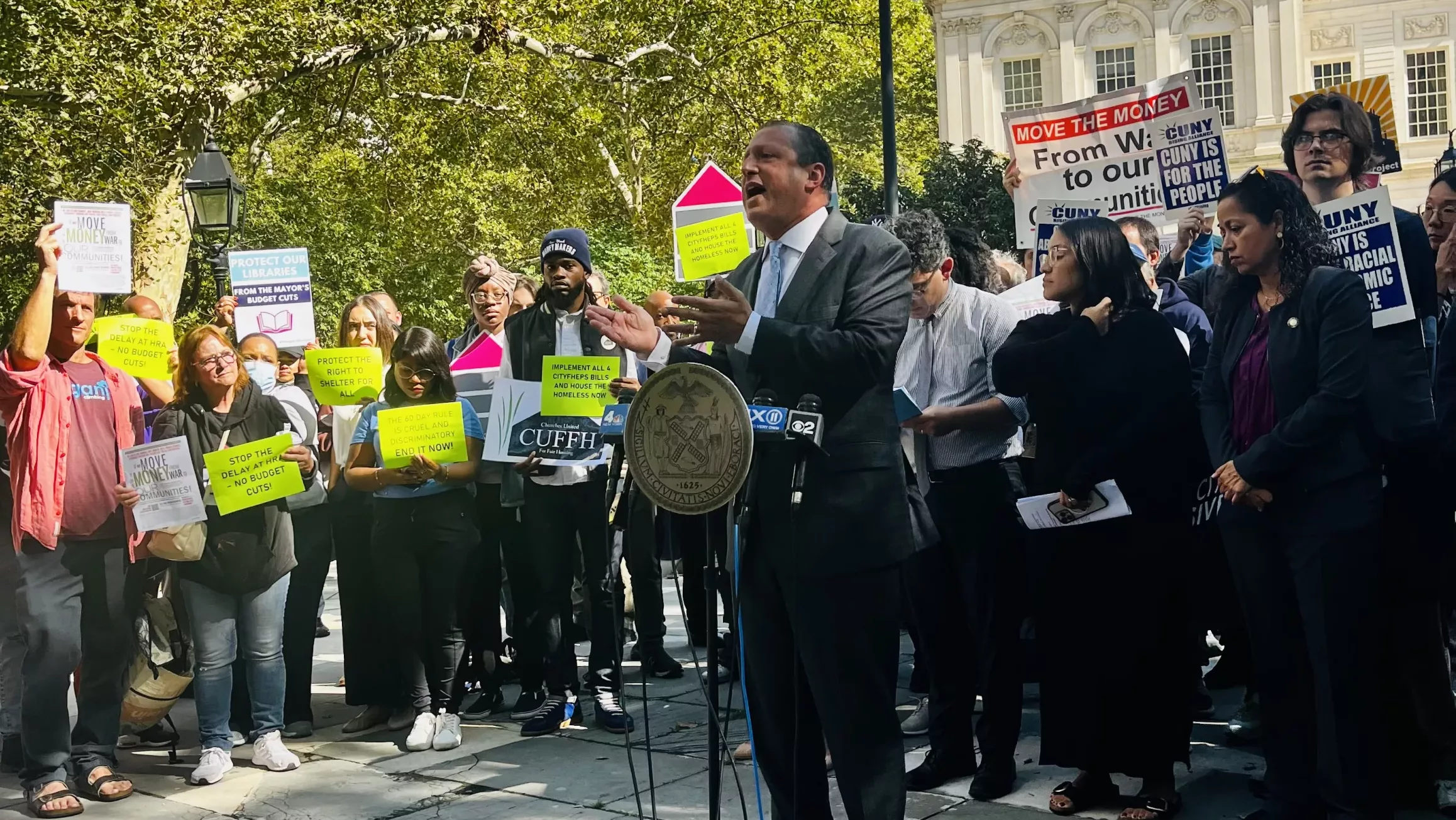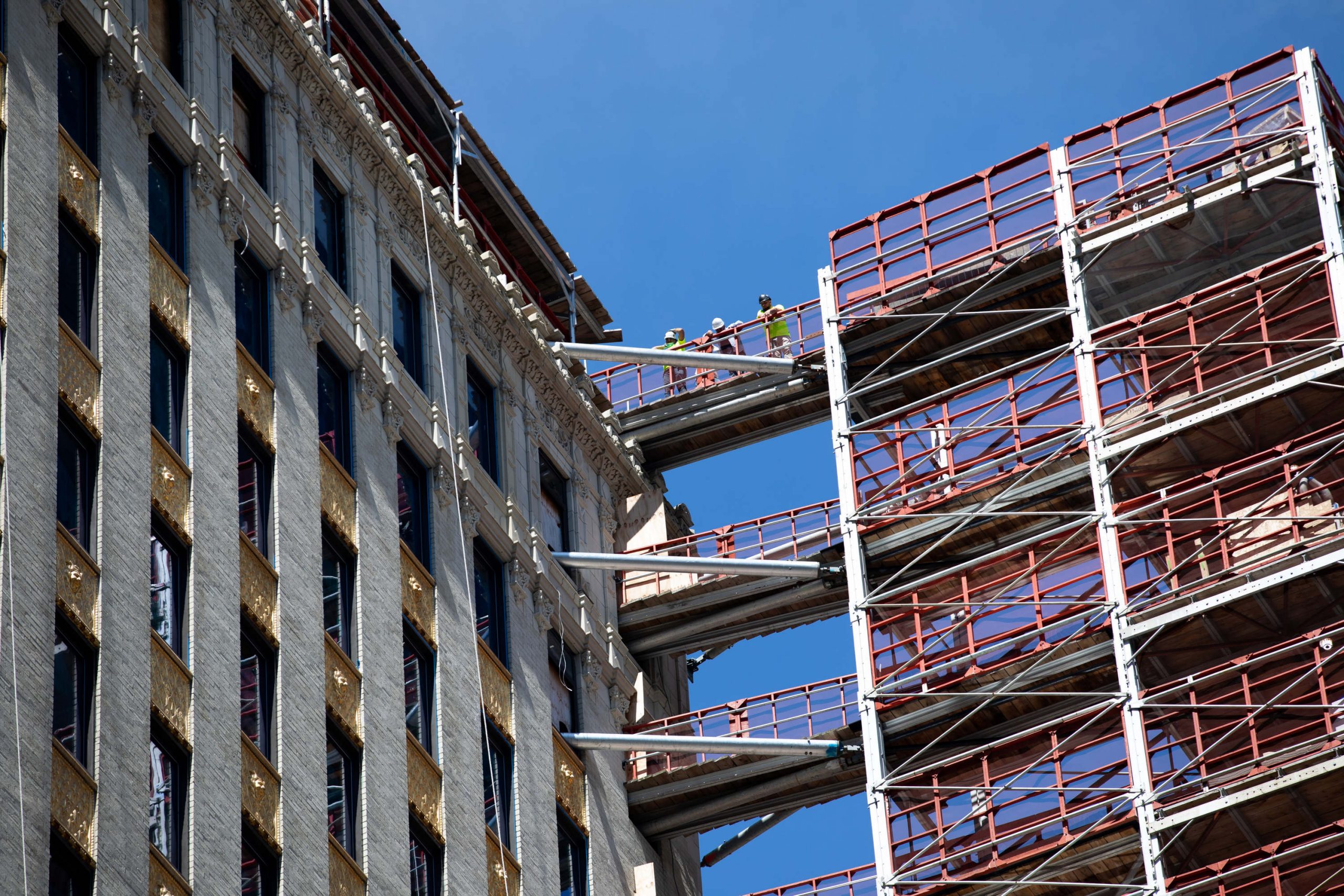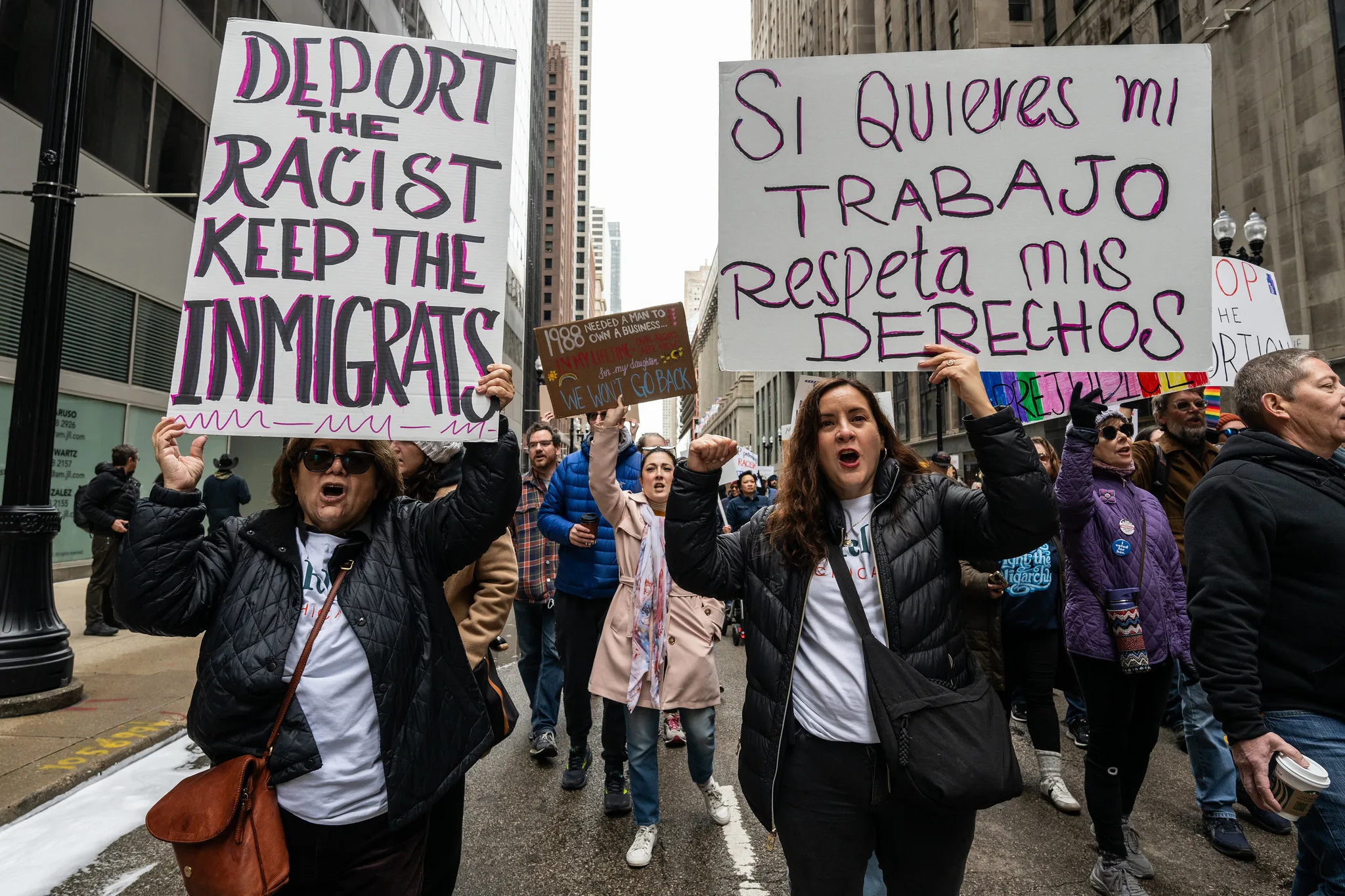Since April of last year, 101,200 asylum seekers have arrived in the five boroughs and the issue of how to care for them has drawn protests across the city. Mayor Eric Adams’ divisive commentary about migrants has created tension between his administration and fellow Democrats. Now, the Mayor has announced budget cuts of 15 percent in public agencies which will affect all agencies covering education, social services, and NYPD. The Progressive Caucus and its allies held a rally at City Hall Park on Tuesday morning to protest the budget cuts. Some leaders are questioning how necessary those budget cuts are.
Also Read: Mayor Adams Threatens NYC Budget Cuts to Cover Costs of Migrants
Brad Lander, New York City Comptroller, said at the rally, “Over the summer the city began a program to help asylum seekers fill in applications so that they can get on the path to get work authorizations. We have spent about $10 million on it so far and we are nearing 4,000 people that we have helped file those applications.” According to Lander, the city estimates that it would cost $33 million to help every single new arrival file an application for asylum by the end of the year and get on the path of work authorization by the end of the year.
Also Read: NYC Grapples with Rising Tensions Over Asylum Seekers
“If 10 percent of those folks as a result were able to move out of the shelter, then next year we would save $330 million, and on a 20 percent we can save up to $660 million, so that people can thrive on their feet, and not only do we save money in the government, but we will have an inclusive economy that works better for all New Yorkers,” Lander said.
How much are migrants costing NYC?
According to Adams, the City has spent $1.45 billion in fiscal year 2023 to provide shelter, food and services to asylum seekers and anticipates spending over $4.7 billion in the current fiscal year. The administration anticipates that over three fiscal years, the city has the potential to spend upwards of $12 billion on “this crisis if circumstances do not change.” On September 9, the Mayor’s office directed every agency to implement a five percent reduction in city-funding spending.
Also Read: Asylum Seekers Could Cost NYC $12 Billion, Mayor Adams Says
“We think this proposal is considerably too aggressive,” says Nathan Gusdorf, executive director at Fiscal Policy Institute during a call with Documented.
Fiscal Policy Institute, an independent, non-partisan, non-profit research and education organization, stated in a report published September 12, “Breaking Down the Fiscal Impact of City Aid to Migrants,” that the proposed budget cuts are billions of dollars higher than the increased cost estimates for asylum seekers.
Gusdorf explained that while the growth in asylum seeker costs is adding new fiscal strain, the City’s request for 15 percent cuts across all agencies — which totals $10 billion in cuts in one year — significantly overstates the fiscal impact of migrant arrivals. With this proposed cut, the Department of Education will be forced to cut its budget by $2.1 billion and the Department of Social Services by $1.4 billion. The budget cuts are concentrated among agencies that provide critical services to migrant families.
The report looked at what the projected costs are, keeping in mind that the City had already budgeted for some costs related to the migrant population. Now the City is projecting additional higher costs partly due to the changes in estimates of what the growth rate will be in the migrant population.
“One other way to think about how to handle that cost is look for cost efficiencies — just bring down the cost of the aid,” Gusdorf said. The report draws attention to the fact that the City’s cost estimates for asylum seekers assume that no progress is made on finding efficiencies in housing or work permits, and that the per-night cost for households remains $383 in the coming two years.
“You would hope as the situation continues, they have a policy team in place that looks for more cost-effective ways to house migrants and provide services,” Gusdorf added.
The Mayor’s office pushed back against Fiscal Policy Institute’s findings. “The Mayor has been clear that absent significant and timely state and federal support, we will have to make tough choices to stabilize our city’s budget. FPI’s calculations are based on incorrect assumptions and are therefore inaccurate,” a spokesperson at the Mayor’s office said.
“The truth is that we must take strong and decisive action now to close anticipated multibillion dollar budget gaps in fiscal years 2024 and 2025, as required by law, and avoid substantial fiscal disruption that will hurt asylum seekers and longtime New Yorkers. If circumstances change over the year, we will reevaluate our savings initiatives,” the spokesperson said to Documented via email.
In response to Governor Kathy Hochul and Mayor Adams’ proposals, 20 legislators in New York State, including Congresswoman Alexandria Ocasio-Cortez, Senator Julia Salazar, Senator Jabari Brisport, Councilmember Tiffany Cabán issued a statement effectively opposing the budget cuts on New York City’s public agencies.
“In a city with more billionaires than anywhere else in the world, these cuts are manufactured scarcity, plain and simple,” the statement reads. It further states, “Mayor Adams has been echoing the xenophobia of Donald Trump and Curtis Silwa, pitting working-class New Yorkers against new arrivals.”
The statement includes advice to the city, state, and federal government on steps that it can take to avert budget cuts.
One of the pointers includes, “Although the state budget cycle is months away, the Governor has amassed more than $13 billion in an ‘economic uncertainties’ fund that allows us to have budget flexibility to meet moments like these.”
There is no disputing the fact that the city’s expenditure has increased as a result of higher spending on public assistance, social services, provision of shelter for newly arrived asylum seekers. This has also been a year when the city has seen record high cash balance on its books which was aided by robust tax collections. By the end of fiscal year 2023, the cash balance stood at $12.39 billion compared to $8.16 billion in fiscal year 2022.
From a cash perspective, the comptroller’s office estimates that the city will spend around $1.5 billion more on public assistance and other social services in fiscal year 2024 than the prior year due to the arrival of asylum seekers, somewhat less than the budget forecast due to an expected payment lag.
Assembly member Harvey Epstein told Documented that the 15 percent budget cuts proposed by Mayor Adams “would cut critical services that are desperately needed in our city.” He highlighted that city and state revenue has continued to increase, and “a better way to manage a crisis is through a tax increase for high-income folks. We can craft innovative solutions that allow the city to meet the needs of all New Yorkers.”














